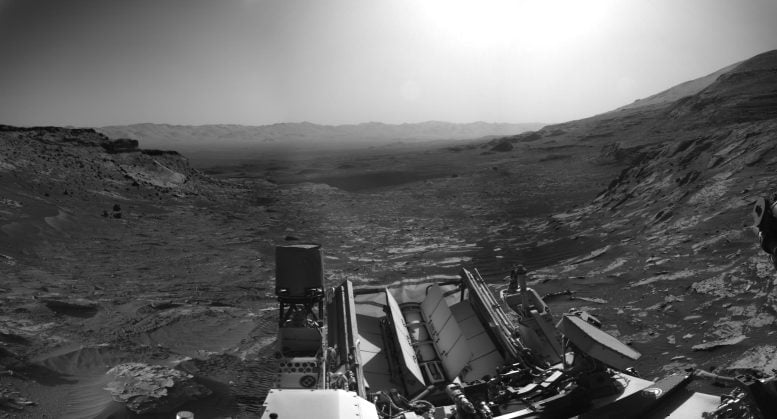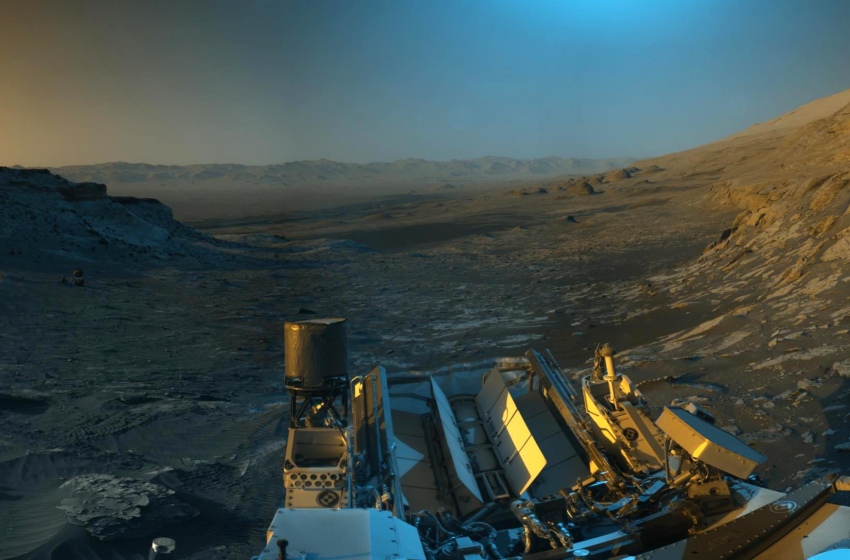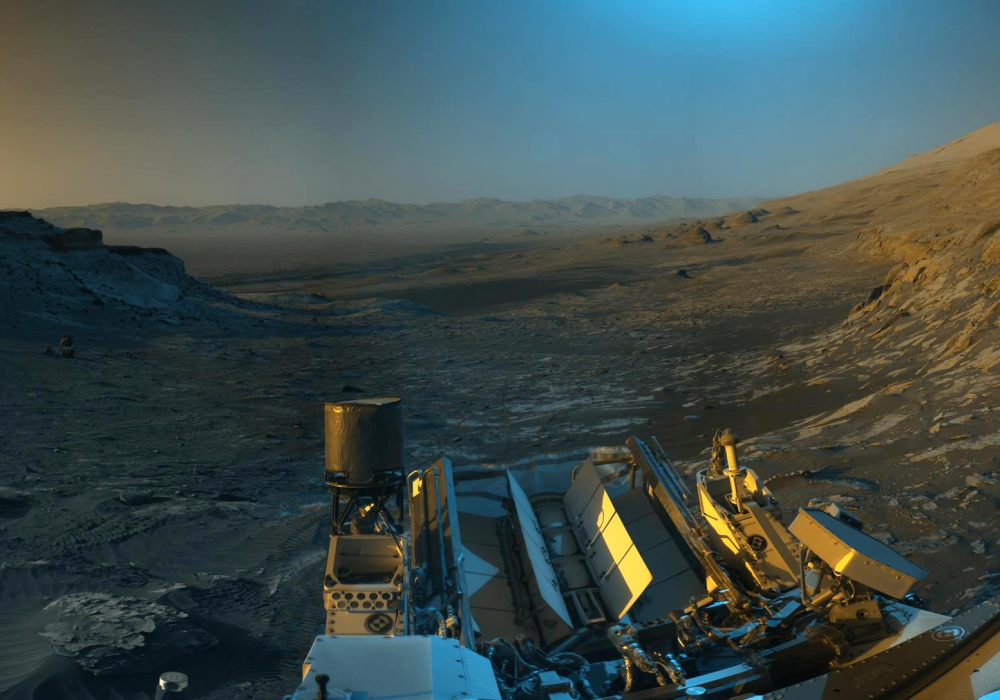NASA’s Curiosity rover captured a remarkable image from its most recent perch on the side of Mars’ Mount Sharp. The mission team was so inspired by the beauty of the landscape, they combined two versions of the black-and-white images from different times of the day and added colors to create a rare postcard from the Red Planet.
Curiosity captures a 360-degree view of its surroundings with its black-and-white navigation cameras each time it completes a drive. To make the resulting panorama easier to send to Earth, the rover keeps it in a compressed, low-quality format. But when the rover team saw the view from Curiosity’s most recent stopping point, the scene was just too pretty not to capture it in the highest quality that the navigation cameras are capable of.

NASA’s Curiosity Mars rover used its black-and-white navigation cameras to capture panoramas of this scene at two times of day. This was the view at 4:10 p.m. local Mars time. Credit: NASA/JPL-Caltech
Many of the rover’s most stunning panoramas are from the color Mastcam instrument, which has far higher resolution than the navigation cameras. That’s why the team added colors of their own to this latest image. The blue, orange, and green tints are not what the human eye would see; instead, they represent the scene as viewed at different times of day.
On November 16, 2021 (the 3,299th Martian day, or sol, of the mission), engineers commanded Curiosity to take two sets of mosaics, or composite images, capturing the scene at 8:30 a.m. and again at 4:10 p.m. local Mars time. The two times of day provided contrasting lighting conditions that brought out a variety of landscape details. The team then combined the two scenes in an artistic re-creation that includes elements from the morning scene in blue, the afternoon scene in orange, and a combination of both in green.

NASA’s Curiosity Mars rover used its black-and-white navigation cameras to capture panoramas of this scene at two times of day. This was the view at 8:30 a.m. local Mars time. Credit: NASA/JPL-Caltech
At the center of the image is the view back down Mount Sharp, the 3-mile-tall (5-kilometer-tall) mountain that Curiosity has been driving up since 2014. Rounded hills can be seen in the distance at center-right; Curiosity got a closer view of these back in July, when the rover started to see intriguing changes in the landscape. A field of sand ripples known as the “Sands of Forvie” stretches a quarter- to a half-mile (400 to 800 meters) away.
At the far right of the panorama is the craggy “Rafael Navarro Mountain,” named after a Curiosity team scientist who passed away earlier this year. Poking up behind it is the upper part of Mount Sharp, far above the area Curiosity is exploring. Mount Sharp lies inside Gale Crater, a 96-mile-wide (154-kilometer-wide) basin formed by an ancient impact; Gale Crater’s distant rim stands 7,500 feet tall (2.3 kilometers), and is visible on the horizon about 18 to 25 miles away (30 to 40 kilometers).
The Curiosity mission is led by NASA’s Jet Propulsion Laboratory, which is managed by Caltech in Pasadena, California.










